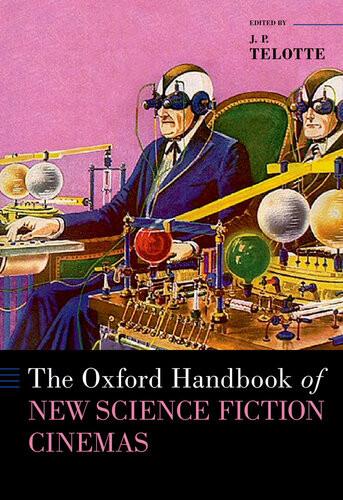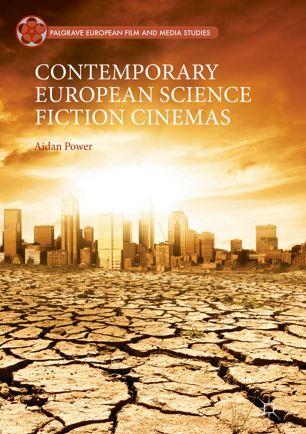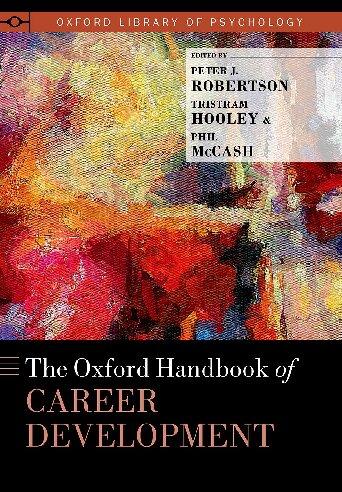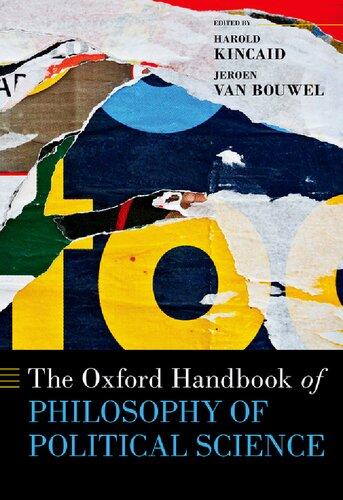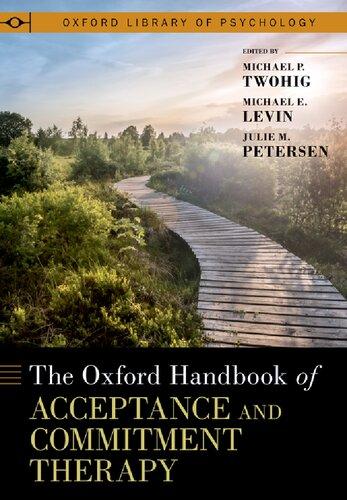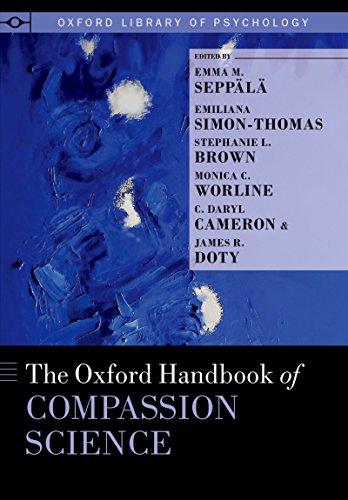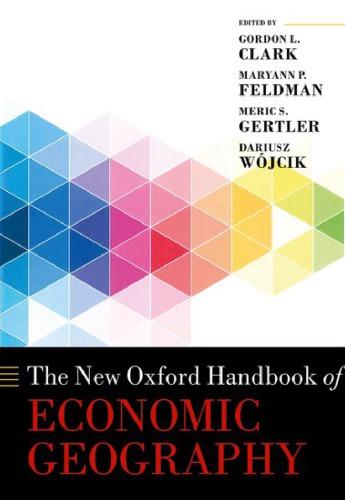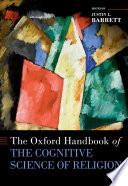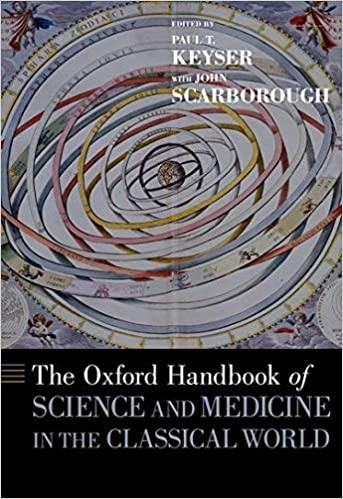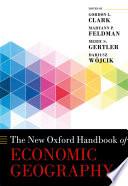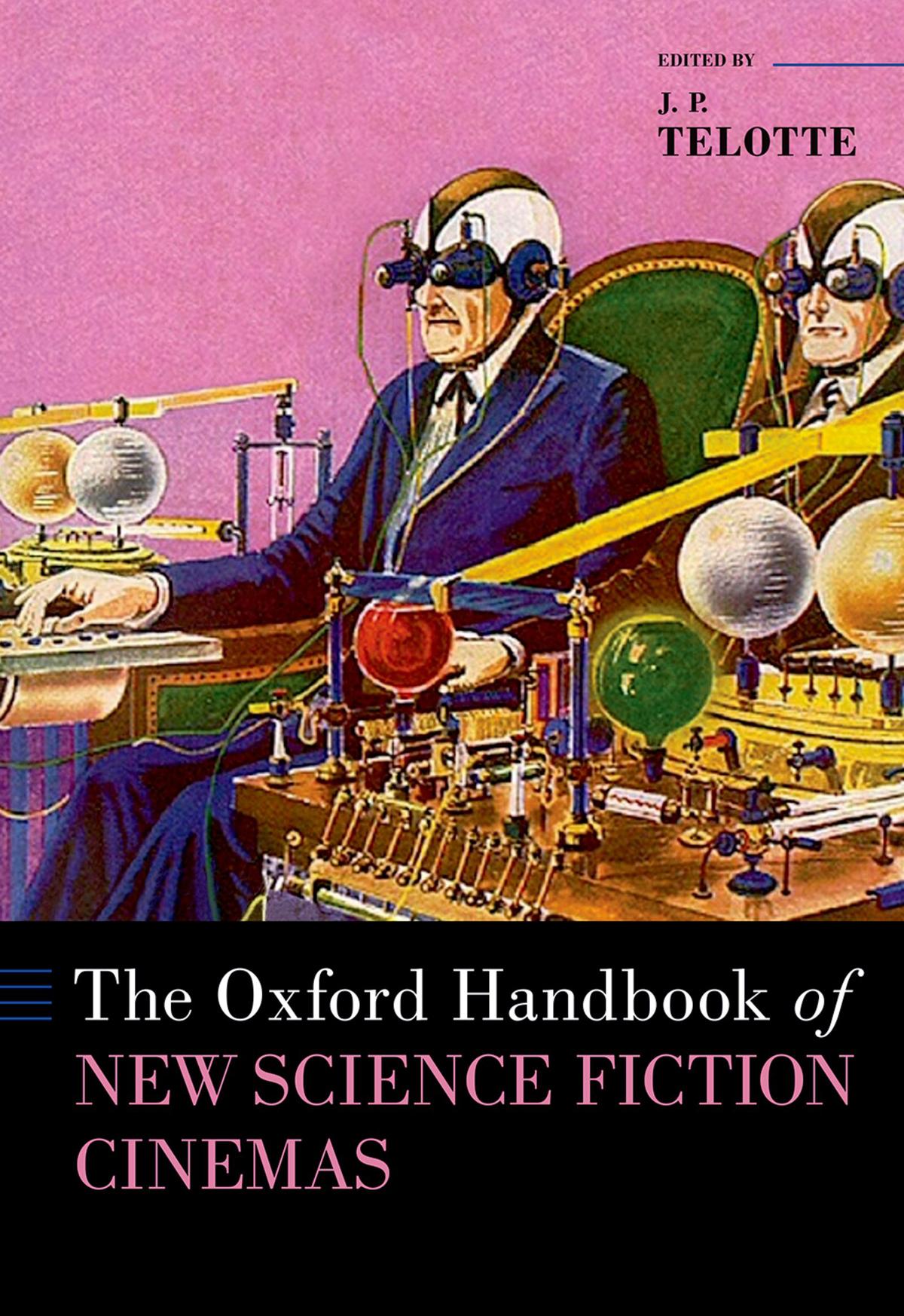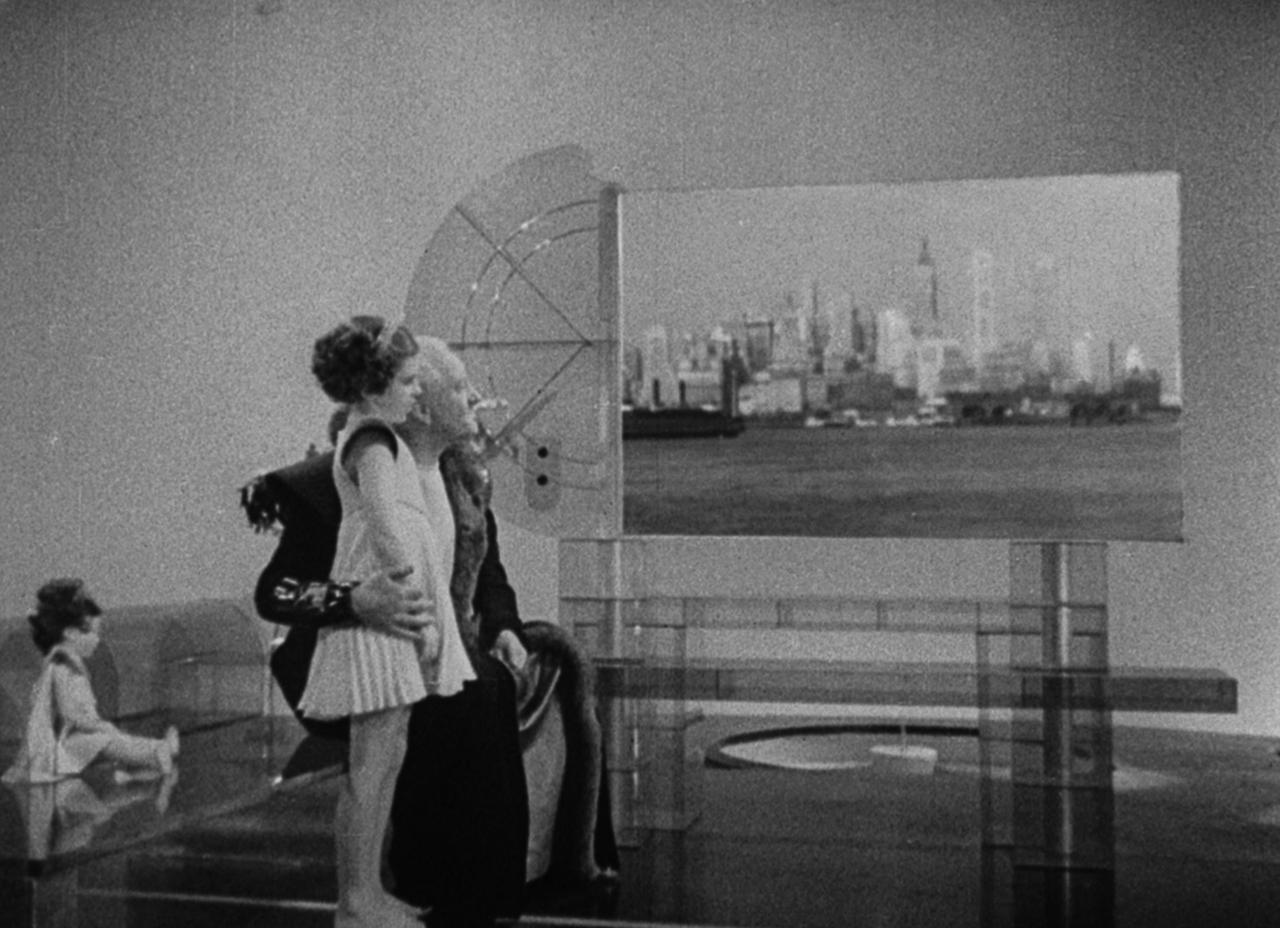NEW SCIENCE FICTION CINEMAS>
Editedby J. P. TELOTTE
Oxford University Press is a department of the University of Oxford. It furthers the University’s objective of excellence in research, scholarship, and education by publishing worldwide. Oxford is a registered trade mark of Oxford University Press in the UK and certain other countries.
Published in the United States of America by Oxford University Press 198 Madison Avenue, New York, NY 10016, United States of America.
© Oxford University Press 2023
All rights reserved. No part of this publication may be reproduced, stored in a retrieval system, or transmitted, in any form or by any means, without the prior permission in writing of Oxford University Press, or as expressly permitted by law, by license, or under terms agreed with the appropriate reproduction rights organization. Inquiries concerning reproduction outside the scope of the above should be sent to the Rights Department, Oxford University Press, at the address above.
You must not circulate this work in any other form and you must impose this same condition on any acquirer.
Library of Congress Cataloging-in-Publication Data
Names: Telotte, J. P., 1949– editor.
Title: The Oxford handbook of new science fiction cinemas / edited by J. P. Telotte.
Description: New York, NY : Oxford University Press, [2023] |
Series: Oxford handbooks series | Includes bibliographical references and index.
Identifiers: LCCN 2022040751 (print) | LCCN 2022040752 (ebook) | ISBN 9780197557723 (hardback) | ISBN 9780197557754 | ISBN 9780197557747 (epub)
Subjects: LCSH: Science fiction films—History and criticism. | LCGFT: Film criticism. Classification: LCC PN1995.9.S26 O987 2023 (print) | LCC PN1995.9.S26 (ebook) | DDC 791.43/615—dc23/eng/20220923
LC record available at https://lccn.loc.gov/2022040751
LC ebook record available at https://lccn.loc.gov/2022040752
DOI: 10.1093/oxfordhb/9780197557723.001.0001
CONTENTS
SlantScreensImageCaptions
Acknowledgments
Contributors
I. INTRODUCTION
1. Introduction: Slant Screens/Slant Screenings
J. P. TELOTTE
II. THE SLANT SCREENS OF NEW SCIENCE FICTION CINEMA
2. Afrofuturist Cinema
DE WITT DOUGLAS KILGORE
3. Biopunk Film
LARS SCHMEINK
4. Cli-Fi Cinema
MARK BOULD
5. Ethnogothic Film
SUSANA M. MORRIS
6. Femspec Science Fiction
SUSAN A. GEORGE
7. Heterotopias
JOAN GORDON
8. Kaiju Film
BRADLEY SCHAUER
9. Magical Realism Science Fiction
GERALD DUCHOVNAY
10. Steampunk Cinema
THOMAS LAMARRE
11. Superhero Science Fiction
ANGELA NDALIANIS
III. NEW SLANTS ON SCIENCE FICTION FILMS
12. The Anthropocene and Ecosophy
GERRY CANAVAN
13. Biopolitics and Bioethics
SHERRYL VINT
14. Cult Behaviors
JEFFREY ANDREW WEINSTOCK
15. Digital Science Fictions
CHUCK TRYON
16. Feminist Materialism
FRANCES MCDONALD
17. Object-Oriented Ontology and Science Fiction Cinema
LEVI R. BRYANT
18. Posthumanism
J. P. TELOTTE
19. Queer Cinema
CATHERINE CONSTABLE AND MATT DENNY
20. Utopianism
CAROLINE EDWARDS
Filmography Index
SLANT SCREENS IMAGE CAPTIONS
Chapter 1
1.1: 1.2: 1.3: 2.1: 2.2
The time-bound nature of genres: television as sf icon in 1936’s ThingstoCome. United Artists.
SF as improvisational form: sf merges with film noir and a punk aesthetic in BladeRunner(1982). Warner Bros. Digital effects visualize a world that might be: the world-train of Snowpiercer(2013) careens through a climate catastrophe. CJ Entertainment.
Chapter 2
“Thin” Afrofuturism offers a Black hero (Will Smith) in a conventional space adventure: AfterEarth(2013). Sony Pictures.
“Strong” Afrofuturism and a new image of Africa: entering Wakanda in BlackPanther(2018). Walt Disney Studios.
Chapter 3
3.1: 3.2:
Trapped in the patterns of DNA, Vincent (Ethan Hawke) of Gattaca(1997). Sony Pictures. Children as “freakish abominations” in the postapocalyptic TheGirlwithAlltheGifts(2016). Warner Bros.
Chapter 4
A frozen New York harbor in TheDayAfterTomorrow(2004). 20th Century-Fox. A “strategic realism”: the controlled space habitat of Elysium (2013). Sony Pictures.
Chapter 5
The developing Ethnogothic tradition seen in Defby Temptation(1990). Shapiro-Glickenhaus Entertainment. Trapped in racial terror: Chris (Daniel Kaluuya) in GetOut (2017). Universal Pictures.
Chapter 6
The femspec vantage: woman (Sigourney Weaver) as “last human standing” in Alien(1979). 20th Century-Fox. Woman in the pilot’s seat: Carol Danvers (Brie Larson) in control in CaptainMarvel(2019). Walt Disney Studios.
Chapter 7
Encountering heterotopic space in TheThingfromAnother World(1951). RKO Pictures. District9(2009): concentration camp as heterotopia. Sony Pictures.
Chapter 8
4.1: 4.2: 5.1: 5.2: 6.1: 6.2: 7.1: 7.2: 8.1:
Toho Studio toys with kaiju tropes in KingKongvs.Godzilla (1962). Toho Studios.
The monster as metaphor for natural disaster—Godzilla (2014). Warner Bros.
Chapter 9
Elisa (Sally Hawkins) and her aquatic other, the Asset (Doug Jones), recognize their mutual fascination in TheShapeof Water(2017). Fox Searchlight Pictures. The Gill Man of CreaturefromtheBlackLagoon(1954) makes off with Kay Lawrence (Julia Adams) in “a beautiful moment of love.” Universal Pictures.
Chapter 10
Mixing two-dimensional and three-dimensional textures in Zeman’s InventionforDestruction(1958). Ceskoslovensky Statni Film.
Steam technologies proliferate wildly in Steamboy(2004). Toho Studios.
Yu Niang defies giant Western steam-powered machinery (Tai ChiZero, 2012). Huayi Brothers Media.
Chapter 11
8.2: 9.1: 9.2: 10.1: 10.2: 10.3: 11.1: 11.2:
Tony Stark (Robert Downey Jr.) and the technological sublime: human mastery through techno-scientific creation in Avengers:AgeofUltron(2015). Walt Disney Studios. Tony Stark (Robert Downey Jr.) constructs his new superhero identity in IronMan(2008). Walt Disney Studios.
Chapter 12
In a zoom-out, the world changes around the time traveler Hartdegen in TheTimeMachine(2002). Dreamworks Pictures.
Hartdegen experiences a new Earth and a new relationship to the world in TheTimeMachine(2002). Dreamworks Pictures.
Chapter 13
Tcherny (Andre Benjamin) marvels at how the garden proliferates in outer space (HighLife, 2018). A24 Films. Dr. Dibs (Juliette Binoche) experiments on life in HighLife (2018). A24 Films.
Chapter 14
Preparations for plastic surgery in Brazil(1985). Universal Pictures.
Otto (Emilio Estevez) amid the generic goods at the Pik ‘n Pay (RepoMan, 1984). Universal Pictures. David (Colin Farrell) resists the threat of animal transformation in TheLobster(2015). Sony Pictures.
Chapter 15
12.1: 12.2: 13.1: 13.2: 14.1: 14.2: 14.3: 15.1: 15.2:
In the digital world of TheMatrix(1999)—bullet-time effect. Warner Bros.
Low-cost digital spectacle: the Nazi moon base in IronSky (2014). Walt Disney Studios.
Chapter 16
16.1: 16.2: 17.1: 17.2:
The use of cinemicroscopy in UpstreamColor(2013): the mysterious worm examined. VHX.
Human intimate “entanglement” (Shane Carruth and Amy Seimetz) in UpstreamColor(2013). VHX.
Chapter 17
Detective Greer (Bruce Willis) and robotic FBI agents in Surrogates(2009). Walt Disney Studios. The “bright object” of oxygen suddenly spews forth in Total Recall(1990). Tri-Star Pictures.
Chapter 18
The title character (Scarlett Johanson) transforms into a networked being in Lucy(2014). Universal Pictures. At the boundary layer between human and alien in Arrival (2016). Paramount Pictures.
Chapter 19
AlienResurrection(1997) juxtaposes the erotic with maternal tactility, as Ripley (Sigourney Weaver) embraces the android Call (Winona Ryder). 20th Century-Fox. The android David (Michael Fassbender) adopts the look of T. E. Lawrence (Prometheus, 2012). 20th Century-Fox.
Chapter 20
18.1: 18.2: 19.1: 19.2: 20.1:
Cobb (Leonardo Dicaprio) reshapes the city in Limbo (Inception, 2010). Warner Bros.
20.2: 20.3: Lucy (Scarlett Johansson) examines the haptic image of her grotesque fingers (Lucy, 2014). Universal Pictures. The disintegration of Justine’s subjectivity within the broader ecosphere (Melancholia, 2011). Nordisk Film/Magnolia Pictures.
ACKNOWLEDGMENTS
LIKE most books, this one was made possible by a great many friends, colleagues, acquaintances, and supporters of academic enterprise. All of them demonstrated great patience, forbearance, and even humor as we navigated the Handbook of New Science Fiction Cinemas through the COVID era. The primary acknowledgment must go to the many colleagues who, when asked to join this project, quickly agreed to contribute their time and talents, probably unaware of how much of both might be involved. While about half of them had worked with me on other efforts, the others took my invitation or importuning on good faith, and I was gratified that they believed I would give their work a worthy stage. I would be most happy to work with them all again. I was also pleased to collaborate with OUP’s Norm Hirschy again. After two other projects together, he was a plucky enough editor to consider a third and more complex effort and to shepherd it through a difficult time. Fortunately, he was backed throughout the publication process by several able and detail-minded assistants, Lauralee Yeary and Zara Cannon-Mohammed, while the team at Oxford’s Newgen Digital Works affiliate, including project managers Mr. Shunmugapriyan and Ms. Usharani, and copy editor Bob Land ensured a smooth course of production. Together, the Oxford/Newgen group ably kept the project on track and, thanks to their open communications, kept me relatively upbeat throughout the extended review and publication process. In my final years (pre-retirement) at Georgia Tech when this project was launched, I was fortunate to have the dependable support of Professor Richard Utz, Chair of the School of Literature, Media, and Communication, as well as numerous department members, especially fellow science fiction enthusiasts Lisa Yaszek and Susana Morris. And as ever, I enjoyed the strong support of my
wife and fellow scholar, Leigh E. Telotte, with whom I could always discuss whatever problems or satisfactions that came along with the book. Finally, I would like to dedicate this volume to three teachers who helped shape my own critical career and whose inspiration is reflected in this volume: William “Ted” Cotton, Malcolm O. Magaw, and Motley F. Deakin.
CONTRIBUTORS
Mark Bould is Reader in Film and Literature at University of West England, Bristol, and a recipient of both the SFRA Award for Lifetime Contributions to sf Scholarship (2016) and the IAFA Distinguished Scholarship Award (2019). He co-edits the monograph series Studies in Global Science Fiction. His most recent books are M. John Harrison: CriticalEssays (2019) and TheAnthropocene Unconscious (2021).
Levi R. Bryant is a Professor of Philosophy at Collin College. He is a prominent figure in the speculative realism and object-oriented ontology movements, and the author of a number of seminal texts in these areas, including Difference and Givenness: Deleuze’s Transcendental Empiricism and the Ontology of Immanence (Northwestern UP, 2008), The Democracy of Objects (Open Humanities, 2011), and Onto-Cartography: AnOntologyofMachines andMedia(Edinburgh UP, 2014).
Gerry Canavan is an Associate Professor in the English Department at Marquette University, teaching twentieth- and twenty-first-century literature and media. He is the co-editor of Green Planets:Ecology andScienceFiction (2014), TheCambridgeCompanionto American ScienceFiction(2015), and TheCambridgeHistoryofScienceFiction (2019), as well as the co-editor of the academic journals Extrapolationand ScienceFictionFilmandTelevision.His first book, Octavia E. Butler (2016), was published in the Modern Masters of Science Fiction series by University of Illinois Press.
Catherine Constable is a Professor in the Department of Film and Television Studies at the University of Warwick. Her research focuses on film-philosophy, feminist film theory, postmodern theory, and Hollywood cinema. Her publications include the monograph Adapting
Philosophy:JeanBaudrillardandTheMatrixTrilogyand articles such as “Challenging Capitalism: Ethics, Exploitation and the Sublime in Moon and Source Code” in Science Fiction Film and Television and “Surfaces of Science Fiction: Enacting Gender and ‘Humanness’ in Ex Machina,” which was short-listed for best article in Film-Philosophy. She is currently writing a monograph on female protagonists and the sublime in contemporary science fiction film.
Matt Denny is a Teaching Fellow in the Department of Film and Television Studies at the University of Warwick. His research focuses on film theory, postmodern theory, and contemporary Hollywood Cinema, particularly genre cinema. Matt has published work on the aesthetics of action cinema and on intertextuality in representations of the female vampire. His current research explores issues of representation in genre cinema, particularly in relation to images of artificial intelligence in horror and science fiction.
Gerald Duchovnay, former department head and Professor of English at Texas A&M–Commerce, is the Founding and General Editor of Post Script: Essays in Film and the Humanities (1981–2021). The author of Humphrey Bogart: A Bio-Bibliography (1999) and editor of FilmVoices, a collection of interviews with filmmakers (2004), he has also co-edited (with J. P. Telotte) ScienceFictionFilm, Television and Adaptation (2012) and Science Fiction Double Feature: The Science Fiction Film as Cult Text (2015), and has published numerous articles on film, literature, and media.
Caroline Edwards is Senior Lecturer in Modern and Contemporary Literature at Birkbeck, University of London where she is Director of the Centre for Contemporary Literature. She is author of Utopiaand the Contemporary British Novel (2019), editor of The Cambridge Companion to British Utopian Literature and Culture (forthcoming), and co-editor of China Miéville: Critical Essays (2015) and Maggie Gee: Critical Essays (2015). Her research has been featured in broadcasts on BBC One, BBC Radio 4, BBC Radio 3, and the BBC World Service, cited in the New Statesman and the Guardian, and
displayed in a dedicated exhibition at the Museum of London (2017–18).
Susan A. George, retired from the University of California, is an independent scholar and librarian. Her work focuses on the construction of gender and the representation of technology in fantastic film and television. Her articles have appeared in such journals as Science Fiction Film and Television and The Journal of Popular Film and Television, and in various anthologies, including The Essential Science Fiction Television Reader. Her work on 1950s science fiction film culminated in her book GenderingScienceFiction Film:Invadersfrom theSuburbs. She is also co-editor of the critical anthology Supernatural,Humanity, andtheSoul:OntheHighway to HellandBack.
Joan Gordon is an editor of ScienceFictionStudiesand a Professor Emerita of Nassau Community College. She has received the SFRA award for lifetime achievement in sf scholarship and writes about feminism and animal studies in sf.
De Witt Douglas Kilgore is Associate Professor of English at Indiana University. He is the author of Astrofuturism: Science, Race and Visions of Utopia in Space (2003). His recent work includes contributions to Literary Afrofuturism in the Twentieth Century and the Oxford Bibliographies in Cinema and Media Studies. He is currently working on two book projects: Galactic Club: Seeking a Postracial Universe in Science/Fiction and The Color of the Future: EssaysontheHopeofContemporaryAfrofuturism.
Thomas Lamarre teaches Cinema and Media Studies at the University of Chicago. His publications focus on media, thought, and material history, and they include Uncovering Heian Japan (2000), on communication networks in medieval Japan; Shadows on the Screen (2005), about silent cinema and the global imaginary; The Anime Machine (2009), on animation technologies; and The Anime Ecology(2018), about animation and infrastructure ecologies.
Frances McDonald is Assistant Professor of English at the University of Louisville. Her research and teaching focus on twentieth-century American literature and film, critical theory, and affect studies. She is the author of Posthumanism: The Modernist Affect of Laughter (2022), and of work that has appeared in AmericanLiterature, LARB, Post45,and TheAtlantic. She is also the co-editor of Thresholds, a digital journal for creative/critical scholarship.
Susana M. Morris is Associate Professor of Black Media Studies at Georgia Institute of Technology. She writes for the Crunk Feminist Collective blog, is co-editor of The Crunk Feminist Collection and Sycorax’s Daughters, and is the author of Close Kin and Distant Relatives:TheParadoxofRespectabilityinBlackWomen’sLiterature.
Angela Ndalianis is Adjunct Professor in Screen Media and Entertainment at Swinburne University of Technology. Her research focuses on visual effects technologies in the superhero, horror, and science fiction genres. She has published numerous articles and books, including Neo-Baroque Aesthetics and Contemporary Entertainment (2004), Science Fiction Experiences (2010), The Horror Sensorium: MediaandtheSenses (2012), and the anthology TheContemporaryComicBookSuperhero(2009).
Bradley Schauer is an Associate Professor in the School of Theatre, Film, and Television at the University of Arizona. He is the author of EscapeVelocity:AmericanScienceFictionFilm,1950–1982 (Wesleyan UP, 2017). His work has also appeared in books and journals such as Film History, The Velvet Light Trap, and Cinematography(Rutgers UP, 2014).
Lars Schmeink is an independent scholar of science fiction and has held visiting professorships at the University of Cincinnati and the University of Leeds. In 2010 he inaugurated the Gesellschaft für Fantastikforschung and served as its predicant for ten years. He is the author of BiopunkDystopias: GeneticEngineering, Society, and Science Fiction (2016) and the co-editor of Cyberpunk and Visual Culture (2018), The Routledge Companion to Cyberpunk Culture
(2020), Fifty Key Figures in Cyberpunk Culture (2022), and New PerspectivesonContemporaryGermanScienceFiction(2022).
J. P. Telotte is Professor Emeritus in Georgia Tech’s School of Literature, Media, and Communication. Co-editor of the journal Post Script, he has published widely on film and television with special emphasis on science fiction and animation. Among his many books are AnimatingSpace:FromMickeytoWALL-E(2010), ScienceFiction TV (2014), Robot Ecology and the Science Fiction Film (2016), Animating the Science Fiction Imagination (2017), and Movies, Modernism,andtheScienceFictionPulps(2019).
Chuck Tryon is a Professor of English at Fayetteville State University. He is the author of three books, On-Demand Culture: Digital Delivery and the Future of Movies, Reinventing Cinema: Movies in theAge of Media Convergence, and Political TV, and is a specialist in the impact of digital media on the film industry.
Sherryl Vint is a Professor of Media and Cultural Studies at the University of California, Riverside, where she directs the Speculative Fictions and Cultures of Science program. Her books include Bodies of Tomorrow, Animal Alterity, Science Fiction: A Guide to the Perplexed,ScienceFiction:TheEssentialKnowledge,and Biopolitical Futures in Twenty-First-CenturySpeculative Fiction. She is an editor of Science Fiction Studies, and of the book series Science and Popular Culture. She has also edited several books, most recently AftertheHuman:Theory,CultureandCriticisminthe21stCentury.
Jeffrey Andrew Weinstock is Professor of English at Central Michigan University and an associate editor for The Journal of the Fantastic in the Arts. He has authored or edited twenty-five books and more than eighty essays and book chapters on such subjects as fantasy, horror, science fiction, and the Gothic. Among his most recent books are And Now for Something Completely Different: Critical Approaches to Monty Python (2020, with Kate Egan), The MonsterTheoryReader(2020), and CriticalApproachestoWelcome to Night Vale: Podcasting between Weather and the Void (2018). Visit him at JeffreyAndrewWeinstock.com.
INTRODUCTION: SLANT SCREENS/SLANT SCREENINGS
J. P. TELOTTE
I
SCIENCE fiction (sf), and particularly a cinematic sf, has often been described as a kind of universal language. Speaking in icons and a syntax drawn from the realms of science, technology, and reason—a trio of components that Susan Sontag, writing in the late 1960s, placed at the core of the sf film (1966, 216)—it has allowed an element of communication between all industrialized peoples, as it addresses many of the common concerns of those inhabiting modern technological culture. Yet for a lingua franca, sf seems to suffer from two distinct but related problems. First, while much has been written about sf in all of its media modes, we still have some trouble agreeing about precisely what it is; we still lack a universally acceptable definition of the genre, at least beyond Darko Suvin’s somewhat timeworn, bounded, yet still useful description of sf as “the literature of cognitive estrangement” (1979, 7). Second, the genre seems to speak in rather diverse ways, as if it were constantly evolving new dialects as it focuses on an ever-widening range of science fictional concerns, not just the readily recognizable subjects like space travel, robotics, and utopian fantasies with which audiences are quite familiar, but also environmental issues, racial tensions, climate concerns, genetic manipulation, gender identity, and so on. This volume seeks to address both problems, not by trying to offer one more definition of the form and then sorting out what is and is not sf, but by considering how these two issues are related
and actually part of what makes it such a useful “language” today. That relationship, as the following essays should suggest, shows most prominently in the varying shapes taken by the contemporary sf film in its efforts to speak to and for its global audience.
Like many others who have tackled the difficult task of defining sf, Edward James, one of the genre’s primary historians, has tried to account for his subject’s multiple dimensions: describing its primary story types, cataloguing its central memes, and exploring its recurring themes. But even in undertaking both a broad and systematic approach to the nature of the genre, its key icons, and how it has used the regime of technoscience as a base for addressing various cultural concerns, he also admits that today, even as sf continues to surge in popularity and presence across a wide range of media, the genre still seems to be very slippery, frequently shifting in its thrusts and imagery, and proving increasingly difficult to define. Addressing this situation, Rob Latham has more recently suggested that, since so much technocultural production seems to share in this idiom, perhaps the real problem of definition today “is to determine what does not count as science fiction” (2014, 5). And as Vivian Sobchack has noted, this same sort of slipperiness persists across sf’s diverse media appearances—and is particularly obvious in sf cinema where, she claims, there is no “consistent cluster of meanings” that attach to its primary icons (2004, 5). Rather, the very “plasticity of objects and settings” that marks this cinema seems to stand in blatant contrast to “the essentially static worlds of genres such as the western and gangster film,” thereby presenting commentators with an inevitably “more ambiguous territory” than we encounter in other genres (Sobchack 2004, 10). It seems that sf is invariably bound up with a variety of other discursive histories, generic formations and reformations, emergences, and (virtual) disappearances that beg to be accounted for.
In response to this situation, James has pragmatically suggested that a possible starting point for discussing the genre—in either its literary or cinematic forms—is acknowledging that “sf is what is marketed as sf: that is a beginning, but no more” (1994, 3). While a simple suggestion, it is not just a case of surrendering to the
difficulties of the task or deferring to another frequent and similarly pragmatic approach: the “I know it when I see it” notion. Rather, he is recognizing that sf, especially in the course of its contemporary flourishing, has become something that is largely defined by its place in culture and by the ongoing changes that mark—and create a market for—those cultural concerns. Readers and authors, game designers and game players, filmmakers and filmgoers all have simply found sf to be a highly suitable language for expressing their assorted and frequently shifting apprehensions about the world (apprehensions typically linked to the latest, and similarly shifting, scientific and technological developments), and for exploring both its present and future possibilities. Those two issues, of sf’s cultural embeddedness and the ongoing changes it reflects, might serve as useful starting points for this handbook—or an admittedly rough roadmap to what remains a surprisingly hard-to-map genre.
While James’s comments (like Suvin’s definition) are mainly directed at sf literature and its readers, they also echo much of the contemporary conversation about the nature of all popular genres—in literature, television, and especially film—while also reminding us of how those genres have exploited the subject matter of sf. Most obviously, they recall Andrew Tudor’s influential, early 1970s discussion of film genres and how they effectively serve their audiences. Drawing largely on the example of the Western, then one of the most popular film forms, Tudor began his assessment of popular genres by describing the obvious, if often side-stepped “chicken-versus-egg” problem that faces every effort at such definition. As he explained, to define a form, one must account for its many characteristics, but to establish what those characteristics are, one must draw on an established canon or group of works. Of course, such a grouping implies that one has already decided which texts fit within the genre under consideration—a decision only made possible by comparing them to a previously determined set of genre characteristics. Given this circular situation, he argued, again quite pragmatically, that undertaking any genre definition ultimately depends on some sort of presumed cultural consensus, a general perception of “what we collectively believe it to be” (Tudor 2003, 7)
at a particular time, suggesting an inherently fluid situation, while also pointing the way for a variety of more contemporary notions about both genre and ultimately a form like sf.
FIGURE 1.1: The time-bound nature of genres: television as sf icon in 1936’s Things to Come. United Artists.
We can see one of those subsequent developments of genre thinking in Steven Neale’s effort to explore more precisely that notion of a “collective” and time-bound appreciation or understanding of genre (see figure 1.1). Neale argued that we might think of every genre as a kind of “inter-textual relay,” a point where popular formulas, typically marked by some elements of flexibility in their subjects and actions, intersect with shifting cultural concerns, or what he terms the “trends and values” (2000, 3) of an era. While Neale, like Tudor, acknowledged the cultural positioning of all film genres,
and especially their responsiveness to a particular (time-bound) audience’s needs and desires—which he grouped under the broad heading of “public expectations”—he also acknowledged that those “expectations” operate in a constant negotiation (“trends”) with the industrial conditions of film production, especially in the context of the genre-rich and genre-obsessed Hollywood movies (Neale 2000, 4). The result, he suggested, is an ongoing, always evolving pattern of relationships—those “relays,” as he terms them—that allows for this inevitably shifting/shifty responsiveness, and that might readily, if somewhat vaguely in the form he offered, open up to more systematic study and understanding. However, such negotiation is itself fraught with ambiguities, for as philosopher Levi Bryant (one of the contributors to this volume) observes, “As is the case with all negotiations, the final outcome or product” practically never coincides with “a pre-existent and well-defined plan” (2014, 19).
While mainly focused on the discourse surrounding television genres, Jason Mittel has sought to nail down some of these ambiguities by focusing more precisely on the actual genre experience. Like Neale, he too assumes that a pattern of “intertextual relations” can be observed between various genre texts and “the cultural operation of genres” (Mittel 2004, 8), but he emphasizes that to better understand those “relations,” we need to ground our study in the pervasive “realized practices” (4) of genre consumption—in his test case, those of everyday television viewing. By considering such practices and situating them in the cultural moment, he suggests, we can begin to arrive at a more elaborate accounting: for how “genres shift and evolve” within a cultural context, how they are “actually experienced” (5)—whether on big screens or small, in group experiences or individually, through network-scheduled viewings or self-determined binge streamings—and how those experiences inflect our understanding and use of a genre, as filmmakers, as filmgoers, and even as critics. Simply put, Mittel’s project aims to explain how a genre like sf, especially in the increasingly varied forms it seems to take as it crosses various sorts of media screens, manages to respond to the concerns and pressures we “actually” experience and with which we continually wrestle.
Similarly suggesting that we might approach genre texts as things that today are variously “experienced”—in film, literature, television, and gaming as well—Mark Bould and Sherryl Vint have effectively linked much contemporary thinking about genre to the specificities of sf, while also striking an interesting note of caution. They too argue that popular genres, and especially sf thanks to its often-hybridized nature, should be seen not as distinct, bounded, and constant formulas, but rather as “fluid and tenuous constructions,” produced by all those who are involved in the creation, distribution, and consumption of those genre texts (Bould and Vint 2009, 48)—that is, by everyone involved in the genre “experience.” And they suggest that those “constructions” are invariably being shaped and reshaped as our cultural needs and desires dictate, and as those needs and desires undergo their own inevitable mutations over time. On the one hand, Bould and Vint are simply describing what has frequently been noted about sf, that is, the genre’s increasing flexibility or adaptability —which, I would argue, is one of the reasons for its great popularity. On the other, they remind us that, much in the manner that Tudor outlined, any sortie at defining a genre like sf will prove to be something of a constant, contingent, and in some ways even frustrating process (recall the chicken and the egg). Acknowledging that fact, while strategically pushing their logic to an extreme but telling conclusion, Bould and Vint note that one might even argue that actually “there is no such thingas science fiction” (2009, 50).
Of course, Bould and Vint are not so much trying to send up the genre, to dismiss it in a puff of smoke, as they are trying to link our thinking about both genres and the rather fluid example that is sf. They are simply underscoring the thing-oriented nature of much of our genre theorizing, perhaps even of our genre consumption, especially when we think about the genre text, as much cultural study has tended to do, as a kind of distraction or palliative—a thing for what ails us at a particular cultural moment. And this thing-y approach has, historically, very often been the case with our thinking about sf. After all, it has long been treated as a distinct form that simply lacks a distinct—or at least satisfactory—name. In the cinema, for example, sf was for many years conflated with horror, a type that
was more firmly established in the public consciousness and the semantic elements of which, particularly such icons as the mad scientist and man-made monster, quite readily took on both horrific and science fictional valences. Thus, even as late as the 1951 alien invasion film The Thing from Another World (Nyby), studio advertising largely papered over the movie’s sf elements, instead posing ominously leading questions, such as “Is It Human or Inhuman? Natural or Supernatural?”—with that issue of the “supernatural” seemingly shutting off the film’s sf credentials. And that advertising often printed “The Thing” in large red letters seemingly dripping blood—a sure sign of the horrific—while either obscuring or rendering in microprint its additional identifier “from another world” (see Telotte 2019). We might also recall that one of the first rigorous historical treatments of sf cinema went veiled under the title An Illustrated History of the Horror Film (Clarens 1967), before being republished, thirty years later, after the genre had attained a new level of popularity (and its author was deceased), as AnIllustratedHistoryofHorrorandScience-FictionFilms.
As for naming, the genre has often been burdened with what Steve Neale nicely describes as “inexact nomenclature” (2000, 121). “Scientifiction,” for example, was the popular title championed by sf pioneer Hugo Gernsback, and it would only slowly give way to the simpler “science fiction” over several decades, while leaving an awkward legacy for the cinema thanks to the companion designation “scientifilm,” a term that was frequently used in the sf pulp magazines and that lingered well into the 1940s. Yet many critics and commentators even in the 1950s would continue to refer to examples of the genre by such varying terms as “scientific romance,” “scientific adventure,” “invention story,” “pseudo-scientific story,” and so on (James 1994, 9–10). Thus, it is hardly surprising that in the film industry, well into the 1950s, the term “science fiction” was just one identifier, used almost interchangeably with various other designations, such as “thriller,” “fantasy,” “exploitation film,” “horror,” and “trick picture.”1 More recently, as Lisa Kernan has documented, George Lucas, a filmmaker invariably linked to sf, pointedly “resisted the generic appellation ‘science fiction’ ” in advertising Star Wars
when it first appeared in 1977, preferring to use the vaguely allusive term “space fantasy” (Kernan 2004, 178). All of these naming efforts were just various ways of marking off that thing-y nature of the form: using (or sidestepping) a particular name to establish boundaries, indicate content to consumers (as well as exhibitors), and declare independence from—or claim intriguing relationships to—other generic kin. However, the variety of those terms further reminds us just how slippery the genre has long seemed to be—as is also evident in the advent of more recent terms and with more recent concerns in mind, titles often applied to literary sf such as “slipstream” or the more broadly allusive and widely embraced “speculative fiction.”
Actually more challenge than pronouncement, then, Bould and Vint’s question about the thing-status of sf only serves to underscore the genre’s elusive nature, and it is a challenge that many others, particularly genre theorist John Rieder, have sought to take up. Even while recognizing the limited and largely rhetorical thrust of their observation, as well as the way that various commentators continue to struggle with defining both the larger notion of genre and the specific instance of something like sf, Rieder has insisted that “constructing genre definitions” remains “a scholarly necessity” (2017, 13), while even suggesting that it is something of a critic/historian’s “duty.” So in properly dutiful fashion and while ranging widely across literary, televisual, and cinematic versions of sf, Rieder has accepted the challenge “to say what sf is” (15), and in fact does so by integrating many of the rather foundational notions about genres that we outlined earlier, including trying to account for audience expectations and critical practice, along with the inevitable historical changes that have occurred both within and outside of the form.
Thus Rieder argues that sf, like other popular genres (and as distinct from what he terms the larger “classical-academic” forms such as tragedy, comedy, satire, and epic), is “the product of the interaction among different communities of practice,” each drawing on its own contemporary “categories” of understanding (2017, 30), and each reflecting different, yet no less significant “motives” for producing and consuming the genre. The inevitable result of this
interaction, he suggests, is that sf, like a number of other popular genres, tends to “overlap, change over time, and demand improvisation” (34), especially as it has come to play an increasingly prominent role in what he terms “the mass cultural genre system,” that is, the “large-scale commercial production and distribution”— and, I would especially add, consumption—of formulaic fictional narratives (1). An additional result is that a commonly embraced understanding of sf, such as Suvin’s simple yet serviceable notion that we think of the genre as a form identified by a pattern of “cognitive estrangement,” tends to lose some of its currency, or at least what we might term its precision, in the face of those ongoing, even intergeneric “demands” and “improvisations.” We have to wonder whether the methods of “estrangement”—and even how we measure that effect—represent constants, or are they, too, in what often seems an increasingly strangeworld—subject to change?
With such questions in mind, Rieder, much like Tudor, Neale, and Mittel, thus emphasizes that we should incorporate into our sf thinking an awareness of what I keep referring to as the genre’s “slipperiness.” The result is an inevitable hedging in offering any sort of firm definition or taxonomy simply because of the way such a genre works. In fact, if we follow out his line of reasoning, we might find that a certain fluidity could even be crucial to howsf works, as it forces us to slipout of our comfort zone to imagine various potentials for difference or change that it offers. In any case, that slippery approach becomes not just, in a return to Edward James’s suggestion, a useful starting place, but actually a necessary one for better thinking about the “historical and mutable” (Rieder 2017, 16) character of sf—a genre that has not only become one of the most popular in the contemporary cinema, but that is also obviously characterized by its Protean possibilities or, put more simply, by its consistent flexibility.
The point of this admittedly selective review of commentary about both genre and sf is to establish the context for what follows here— this volume’s own multiple accounts, which, in various ways, try to address what Rieder loosely characterizes as sf’s “improvisation.” The purpose of the subsequent essays is to follow the lead of these and a
number of other critical approaches to genre thinking and especially to contemporary sf cinema, by embracing the “multiple” and “mutable” characteristics that they commonly observe. And I would offer that this volume does so, much as Rieder suggests, rather “dutifully,” although not just to clear a path for another—easily frustrated—effort at further refining the notion of genre or to arrive, by volume’s end, at a more widely (if only temporarily) satisfying definition of sf. Rather, it takes that highly fluid character as its problematic, and as the necessary starting point for exploring sf in the cinema. For sf today is manifestly a multi-form, and therefore also an elusive one that invites our thinking about how open it is to improvisation—or slipperiness. The aim here is to accept that implicit invitation and undertake some of that thinking, capitalizing on this sense of elusiveness to better understand how sf has developed its contemporary character—or, as the body of this collection more properly suggests, characters—while starting a mapping process of what seem to be at least some of the multiple trajectories it is following. If sf is indeed subject to ongoing construction and reconstruction by its many “communities of practice,” as all our contributors assume, then these various essays need to follow the lead of those communities, tracking the different paths down which sf —not a “thing,” not a bounded formula, but rather a quite shifty “practice”—rather obviously leads. For in tracing those multiple paths and illustrating how a variety of contemporary films enact what Rieder broadly terms “the relation of formal strategies to ideologies” (2017, 170), all linked by a common fascination with science, technology, and the workings of reason, we might better grasp the Protean nature not of a monolithic sf, but, as this volume’s title offers, the amazing variety of “New Science Fiction Cinemas.”
IIAs I hope the preceding comments have adequately suggested, while sf is arguably the most popular screen genre today, it also has a decidedly multiple character, in fact, far more so than we might
